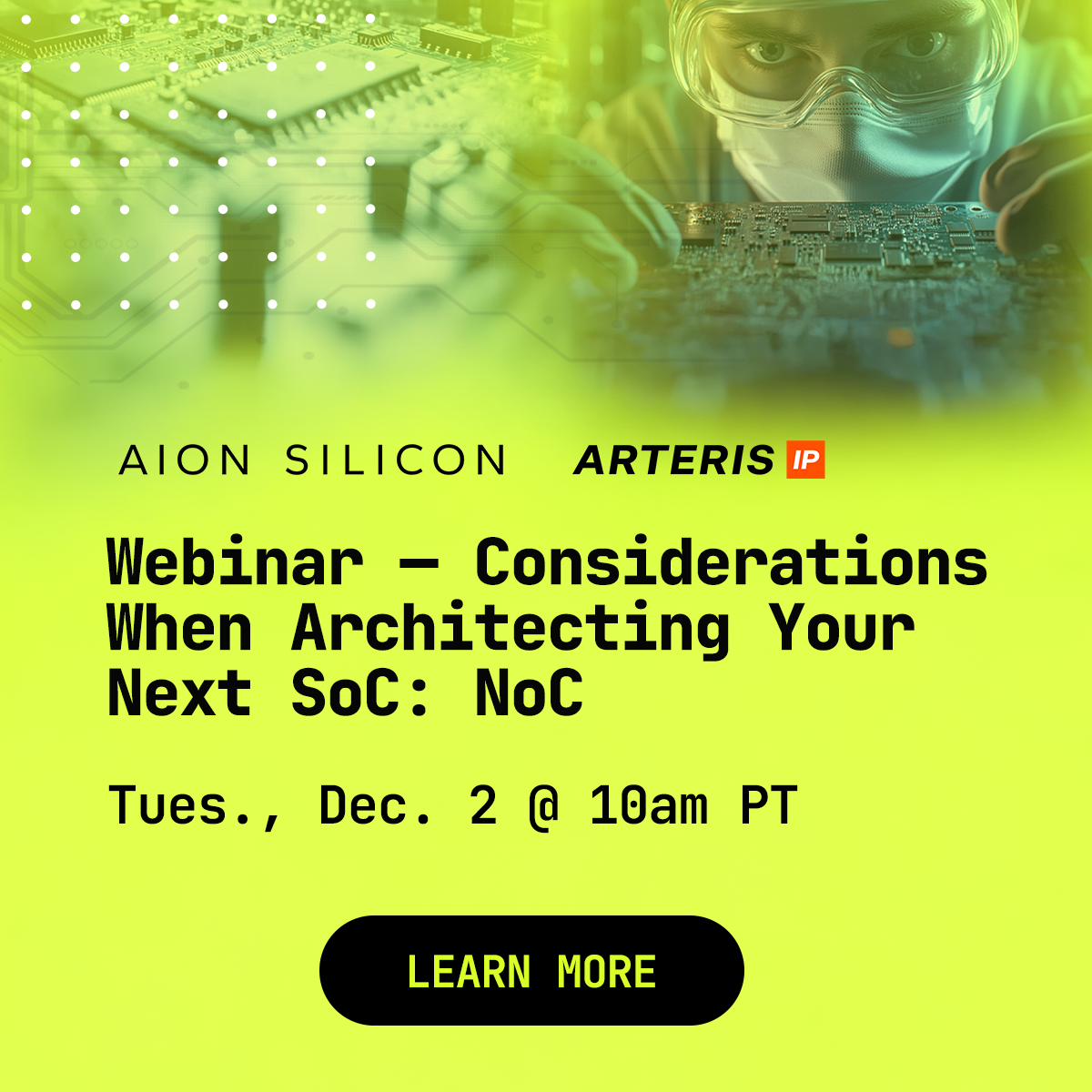Mixel, Inc., a longtime leader in mixed-signal and MIPI® interface IP, entered a new chapter in its history following its acquisition by Silvaco Group, Inc., a global provider of design software and semiconductor IP. The acquisition, completed earlier in 2025, marks a strategic move that combines Silvaco’s deep expertise in… Read More
 WEBINAR: Revolutionizing Electrical Verification in IC DesignIn the complex world of IC design, electrical…Read More
WEBINAR: Revolutionizing Electrical Verification in IC DesignIn the complex world of IC design, electrical…Read More Live Webinar: Considerations When Architecting Your Next SoC: NoC with Arteris and Aion SiliconThe explosive growth of AI and accelerated computing…Read More
Live Webinar: Considerations When Architecting Your Next SoC: NoC with Arteris and Aion SiliconThe explosive growth of AI and accelerated computing…Read More From Silos to Systems, From Data to Insight: Keysight's Upcoming Webinar on EDA Data TransformationIn the fast-evolving world of electronic design automation…Read More
From Silos to Systems, From Data to Insight: Keysight's Upcoming Webinar on EDA Data TransformationIn the fast-evolving world of electronic design automation…Read More Agentic Bug Localization. Innovation in VerificationBug localization continues to be a challenge for…Read More
Agentic Bug Localization. Innovation in VerificationBug localization continues to be a challenge for…Read MoreCloud-Accelerated EDA Development
By Nikhil Sharma, Sunghwan Son, Paul Mantey
The semiconductor industry faces an unprecedented crisis that threatens the very foundation of technological innovation. According to the latest Siemens EDA / Wilson Research Study, first-silicon success rates have plummeted to just 14%[1]—the lowest figure in more than twenty… Read More
A Tour of Advanced Data Conversion with Alphacore
There is always a lot of buzz about advanced AI workloads at trade shows. How to train them and how to run them. Advanced chip and multi-die designs are how AI is brought to life, so it was a perfect fit for discussion at a show. But there is another side of this discussion. Much of the work going on in AI workloads has to do with processing… Read More
Video EP12: How Mach42 is Changing Analog Verification with Antun Domic
In this episode of the Semiconductor Insiders video series, Dan is joined by Antun Domic, who discusses Mach42’s work on AI and analog verification. Antun covers many aspects of analog/AMS verification and how Mach42’s unique AI-fueled approach provides significant benefits. He explains the balance of speed … Read More
Silicon Creations Company Update 2025
WEBINAR: Is Agentic AI the Future of EDA?
The semiconductor industry is entering a transformative era, and few trends are generating more discussion or confusion than Agentic AI. From autonomous design exploration to next-generation verification strategies, Agentic AI promises dramatic changes in how chips are conceived, validated, and delivered. But as with … Read More
Semiconductors Up Over 20% in 2025
The world semiconductor market was $208 billion in third-quarter 2025, according to WSTS. This marks the first time the market has been above $200 billion. 3Q 2025 was up 15.8% from 2Q 2025, the highest quarter-to-quarter growth since 19.9% in 2Q 2009. 3Q 2025 was up 25.1% from 3Q 2024, the highest growth versus a year earlier since… Read More
FPGA Prototyping in Practice: Addressing Peripheral Connectivity Challenges
Modern chip design verification often encounters challenges when connecting peripherals, primarily due to drastic differences in operating speed or hardware limitations. Designs running on hardware emulators or FPGA prototyping platforms typically operate at clock frequencies of tens of megahertz, and in some cases even… Read More
An Insight into Building Quantum Computers
Given my physics background I’m ashamed to admit I know very little about quantum computers (QC) though I’m now working to correct that defect. Like many of you I wanted to start with the basics: what are the components and systems in the physical implementation of a quantum “CPU” and how do they map to classical CPUs? I’m finding the… Read More
I Have Seen the Future with ChipAgents Autonomous Root Cause Analysis
I have seen a lot of EDA tool demos in my time. More than I want to admit. The perceived quality of the demo usually came down to a combination of the speed of the tool, quality of results and the ease of navigating through the graphical user interface. For the last item, how easy the interface was on the eyes, how clear were the relationships… Read More









Website Developers May Have Most to Fear From AI